
Comprising over 1000 square kilometers of land at an elevation of 236m and a population of only 50 people (2016 census), the small village of Silverton is situated in the far west of New South Wales, and about 26km north-west of Broken Hill. Silverton receives more than 120,000 visitors every year.
Mad Max II, Adventures of Priscilla - Queen of the Desert, and Mission Impossible II are few examples from an impressive list of movies filmed in Silverton.
See this location on Google Maps
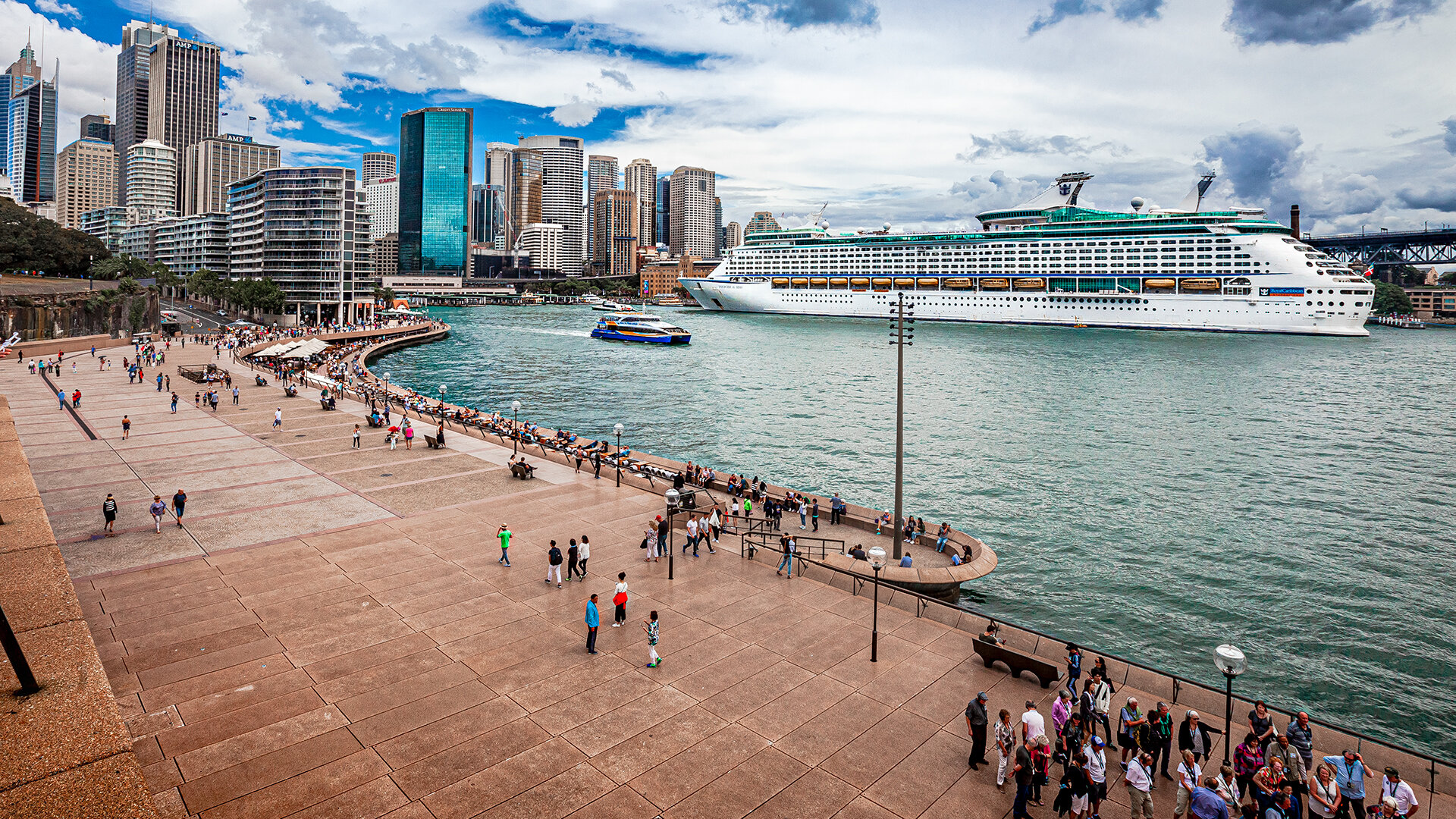
This view of the Sydney harbor can be seen from the Sydney Opera House.
See this scene on Google Street View.

Between Peterborough and Broken Hill, right beside the live highspeed railway line, there is an Australian National (AN) signboard saying Dead Man’s Hill. The story goes: In the early 1900s in the middle of summer, a fettler died while working on the track at Dead Man's Hill. As the deceased had no relatives, railway workers gave him a Christian burial on the hill.
Near this signboard, there is a white wooden cross marking the grave. In recent years, a retired train driver from Pt. Pirie along with his mates from the railway has been visiting the site and has restored the cross.
See this signboard on Google Street View.
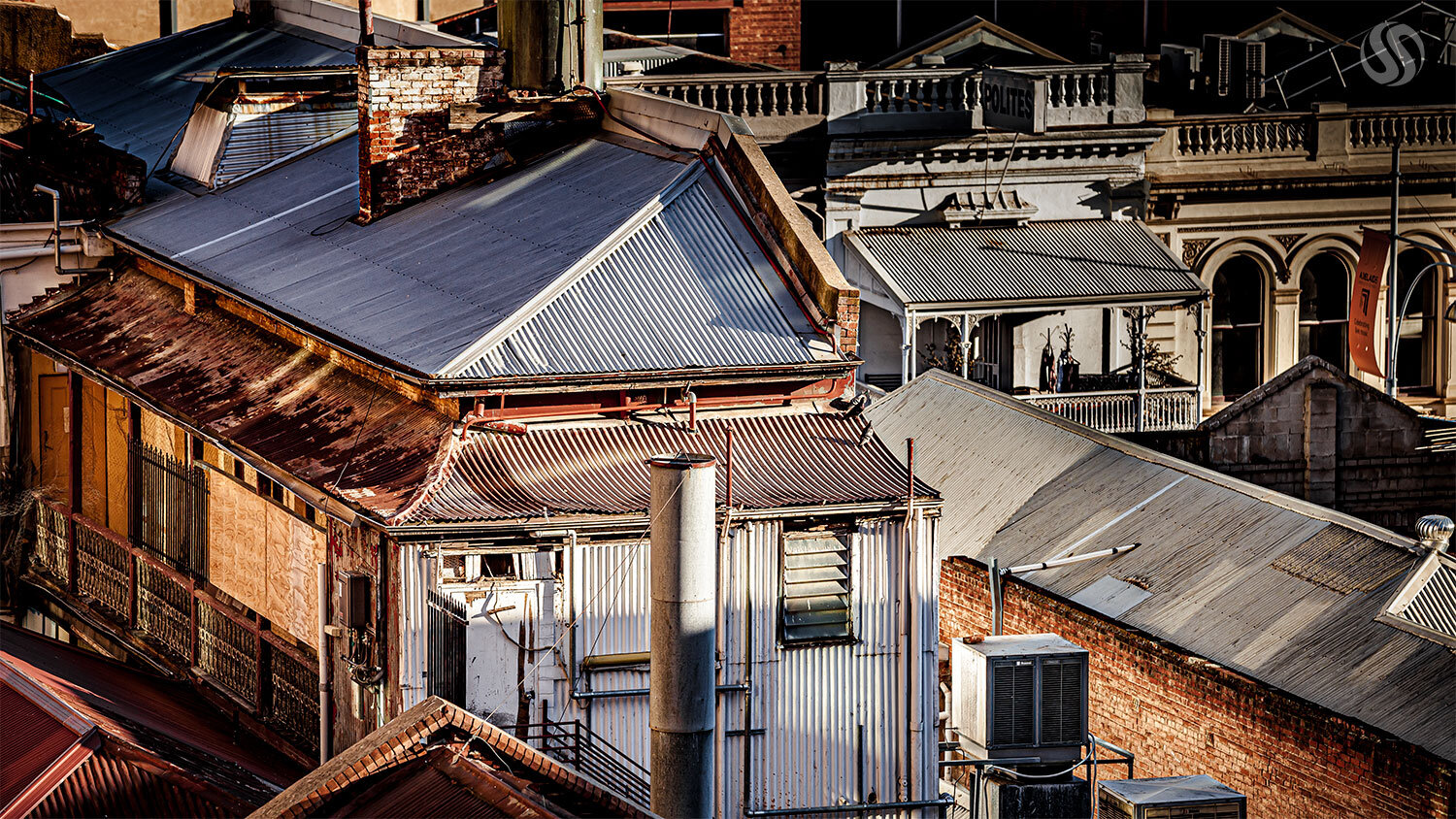
A ‘lean-to’ is a type of simple structure that was added to an existing building with the rafters ‘leaning’ against another wall. Corrugated iron was a popular material used to construct the roofs and walls of such structures owing to how light, affordable, durable and easy to install it is.
In 1881, a fully functioning water-borne sewerage system was installed in Adelaide, making it the first city in Australia to have one. Indoor plumbing in the 1900s allowed for the expansion of in-building toilets, making corrugated iron lean-tos more and more prevalent on the backs and tops of existing buildings.
Though only a few building-top lean-tos remain now, this large one still existing behind the old Victoria Hotel (now Woolshed) on Hindley Street.
See the Woolshed site on Google Maps
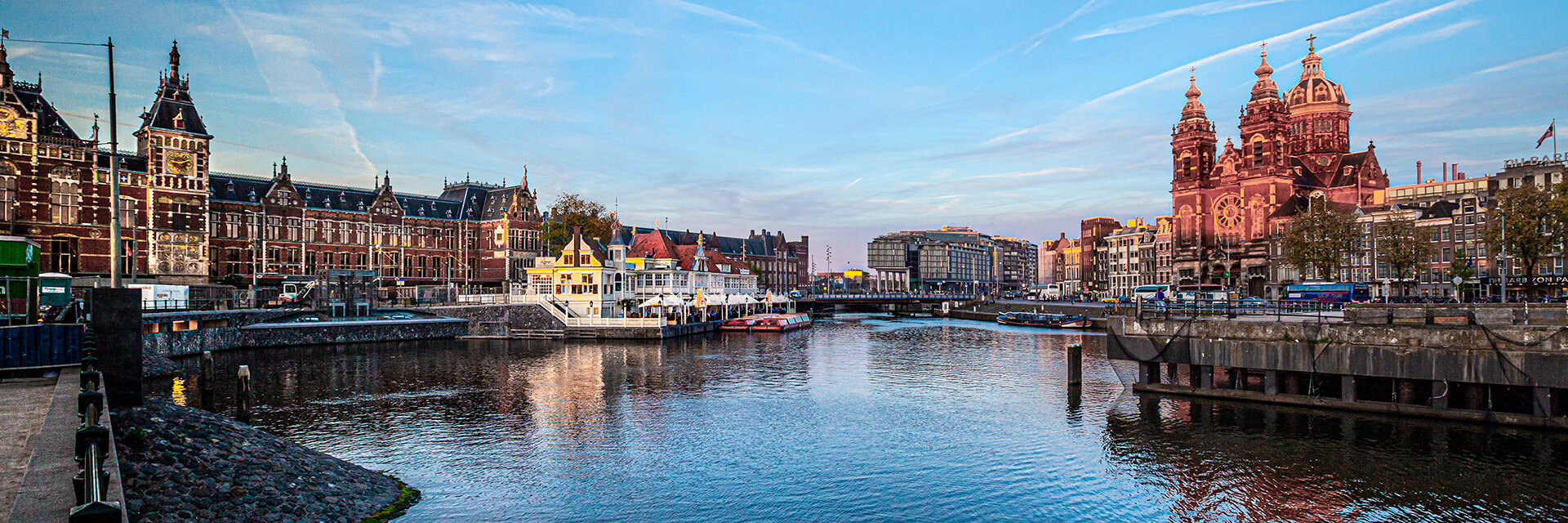
Sitting between the basilica on the right and the central station on the left, and painted in white is Loetje Centraal - a 40-year-old steakhouse that is the home of the fabulous Loetje Biefstuk Ossenhaas & signature gravy.
Visit the Loetje Centraal website.
See the steakhouse on Google Maps.
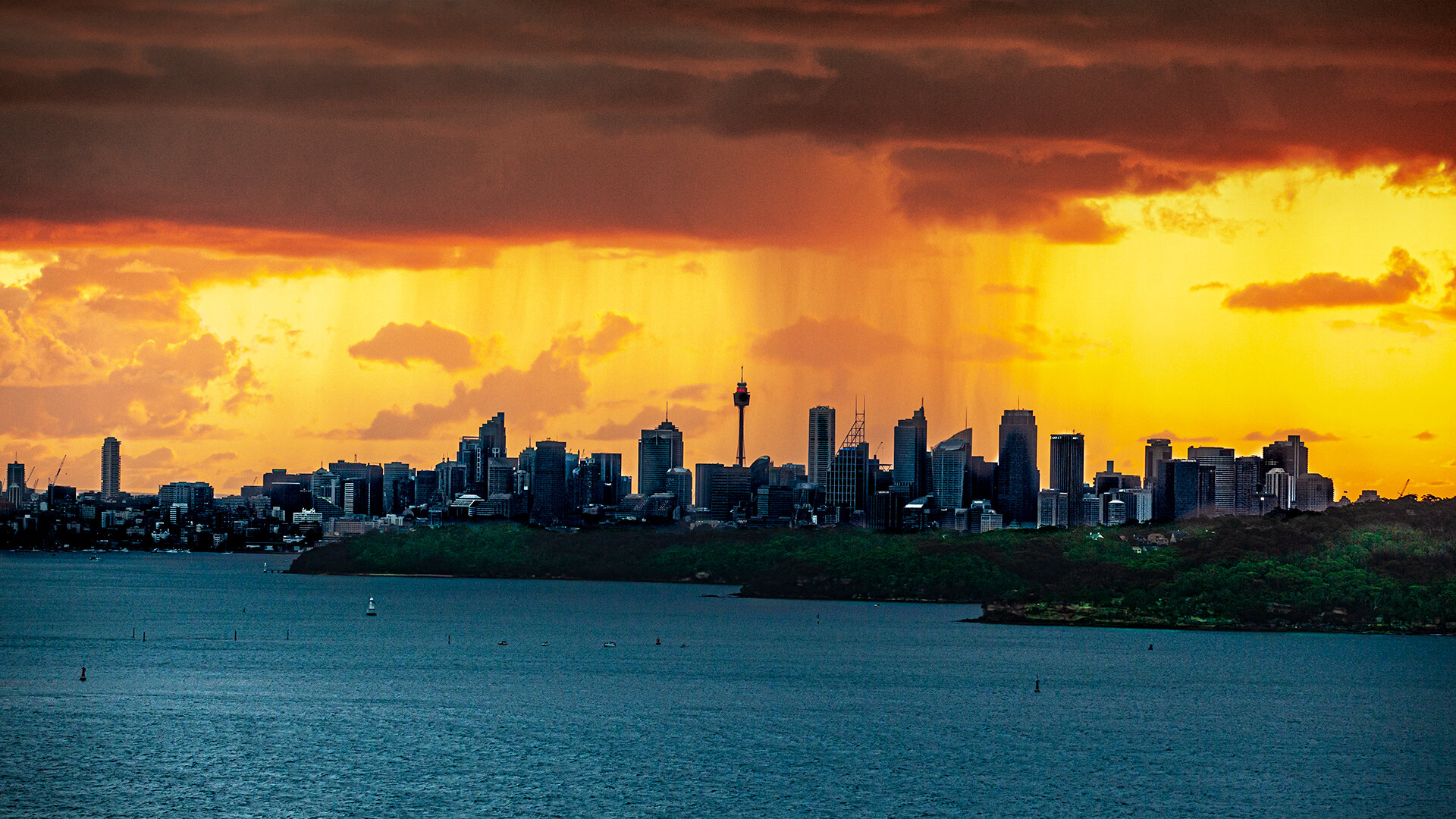
Seen from the viewpoint near the North Head sanctuary, this is rain at dusk over Sydney’s central business district.
See this scene on Google Street View.
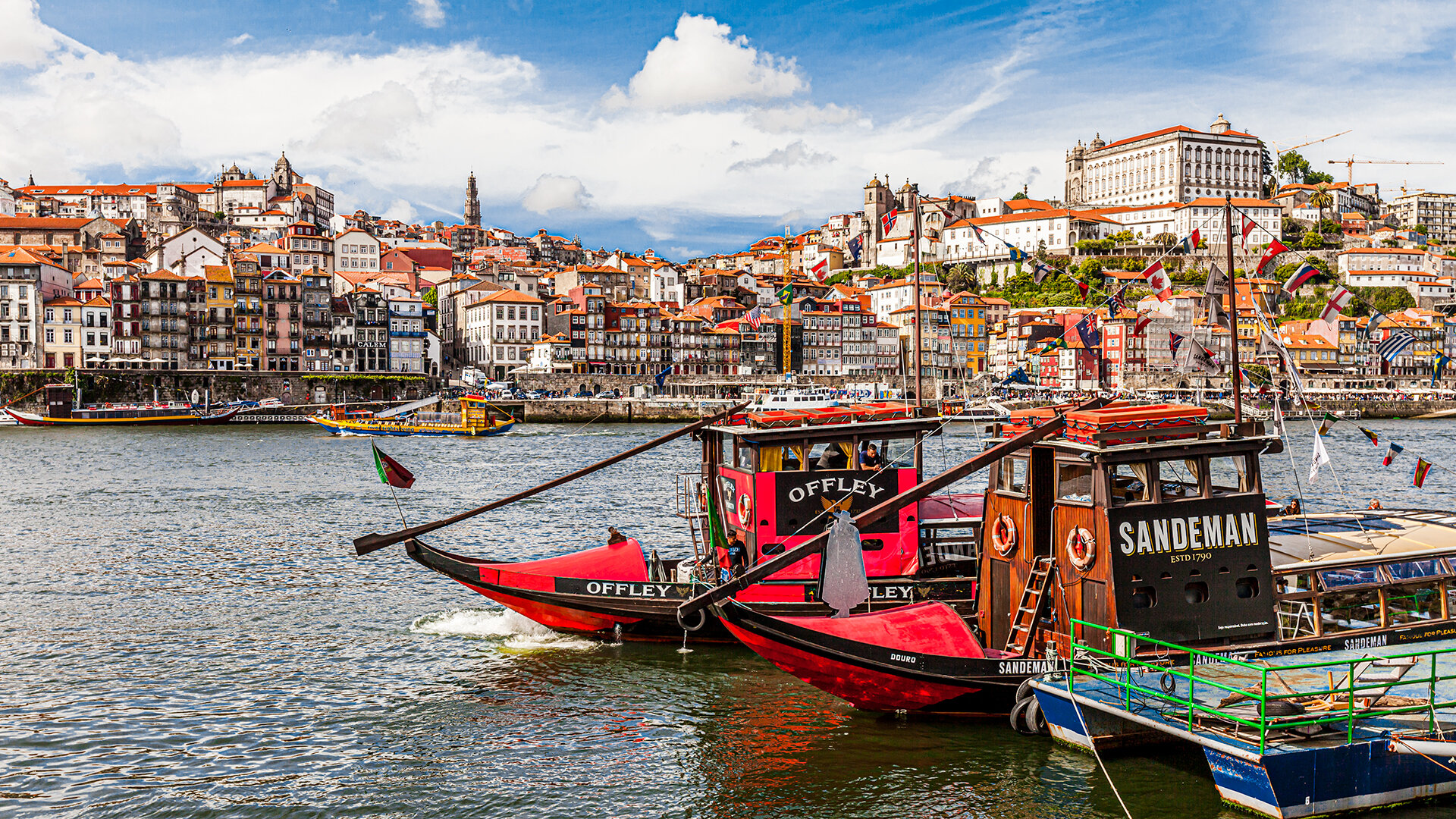
The view of Porto seen from across the Duoro river from Vila Nova de Gaia.
See this scene on Google Street View.
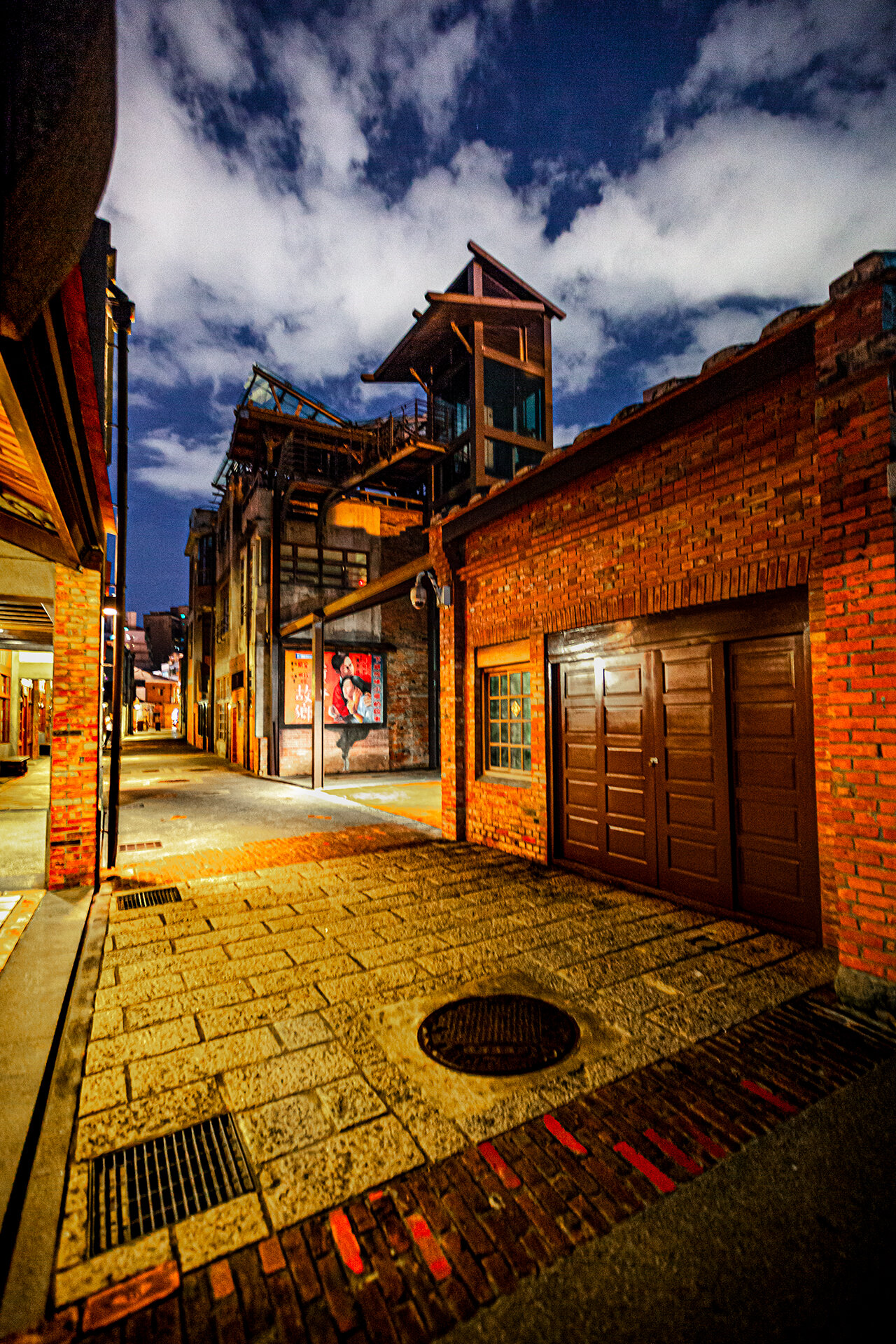
This road and buildings in Taipei are preserved by the government as a historical and cultural district.
In the late 1800s, during the late Qing Dynasty, Bopiliao was one of the busiest and most prosperous commercial areas in Taipei. It was home to various merchants and was one of the major areas for the coal trade.
See this scene on Google Street View.
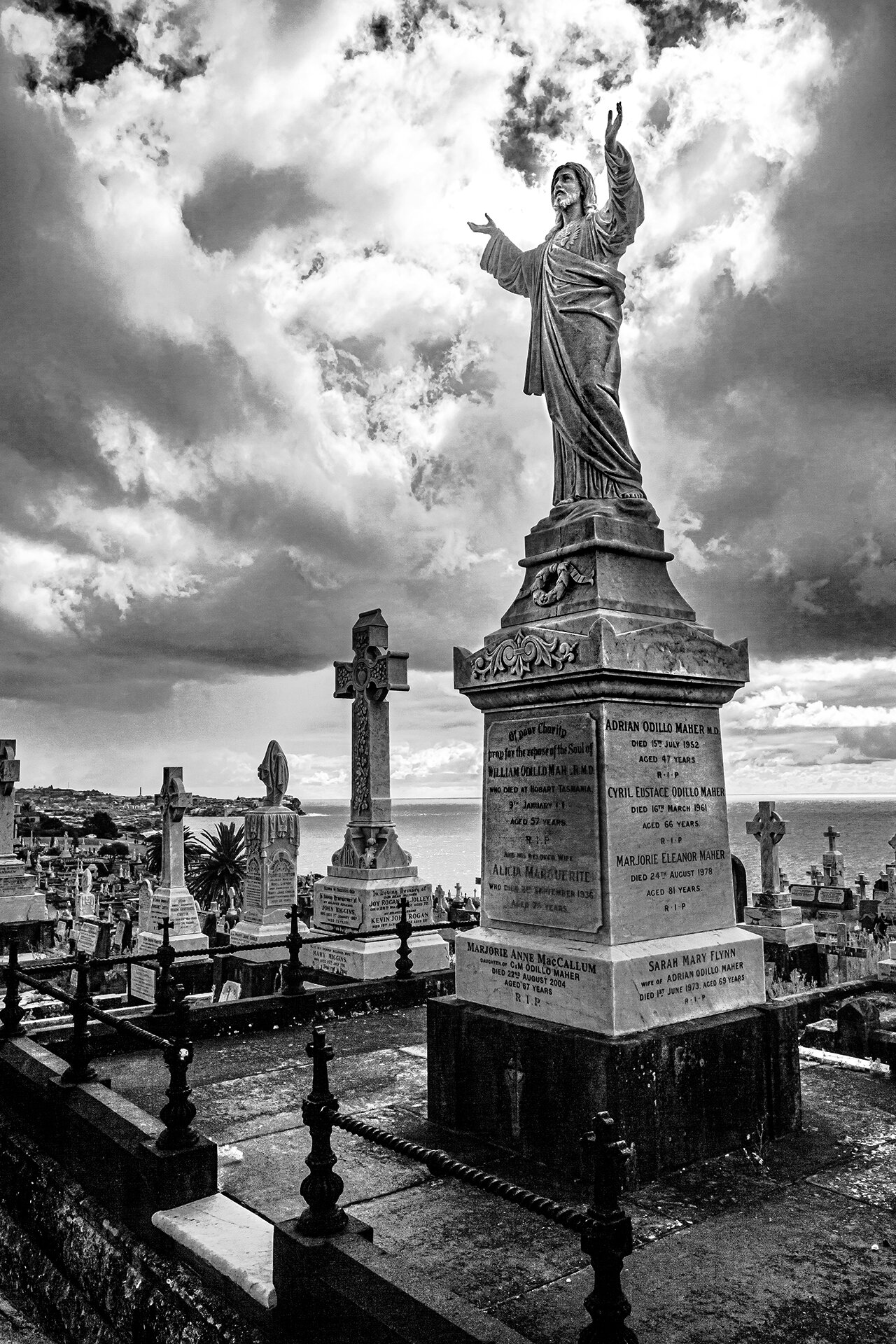
Waverly is a beautiful coastal cliff-top cemetery at Bronte in the eastern suburbs of Sydney. This heritage-listed cemetery was opened in 1877.
See this scene on Google Street View.
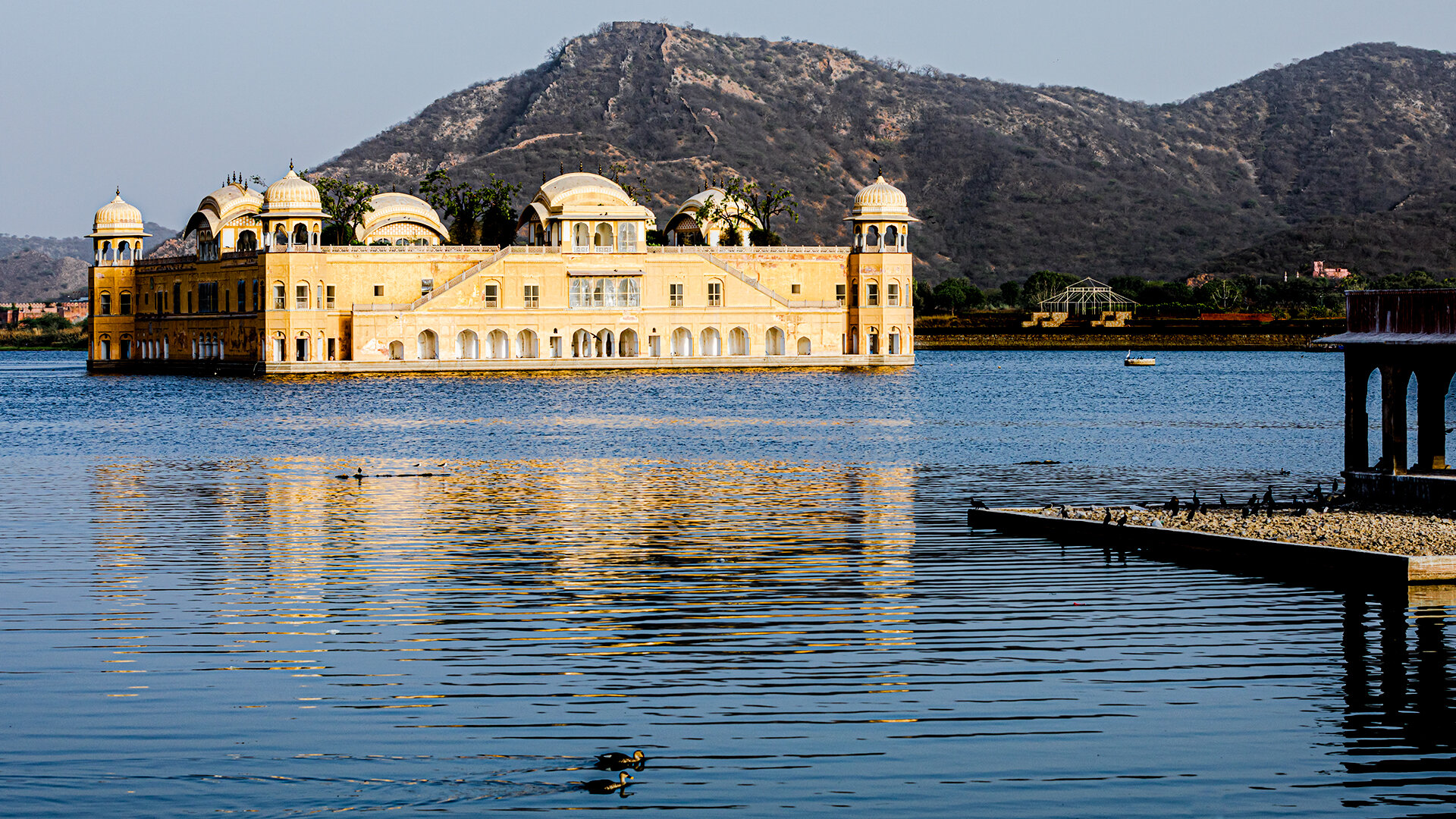
The 18th-century Jal Mahal (Water Palace) was built in the Rajput style architecture in the middle of the Man Sagar Lake in Jaipur city.

This Buddhist nun had been meditating for many hours at the base of the Ruwanweliseya stupa when I took this picture. The shade of a singular stone pillar was her only protection from the scorching sun.
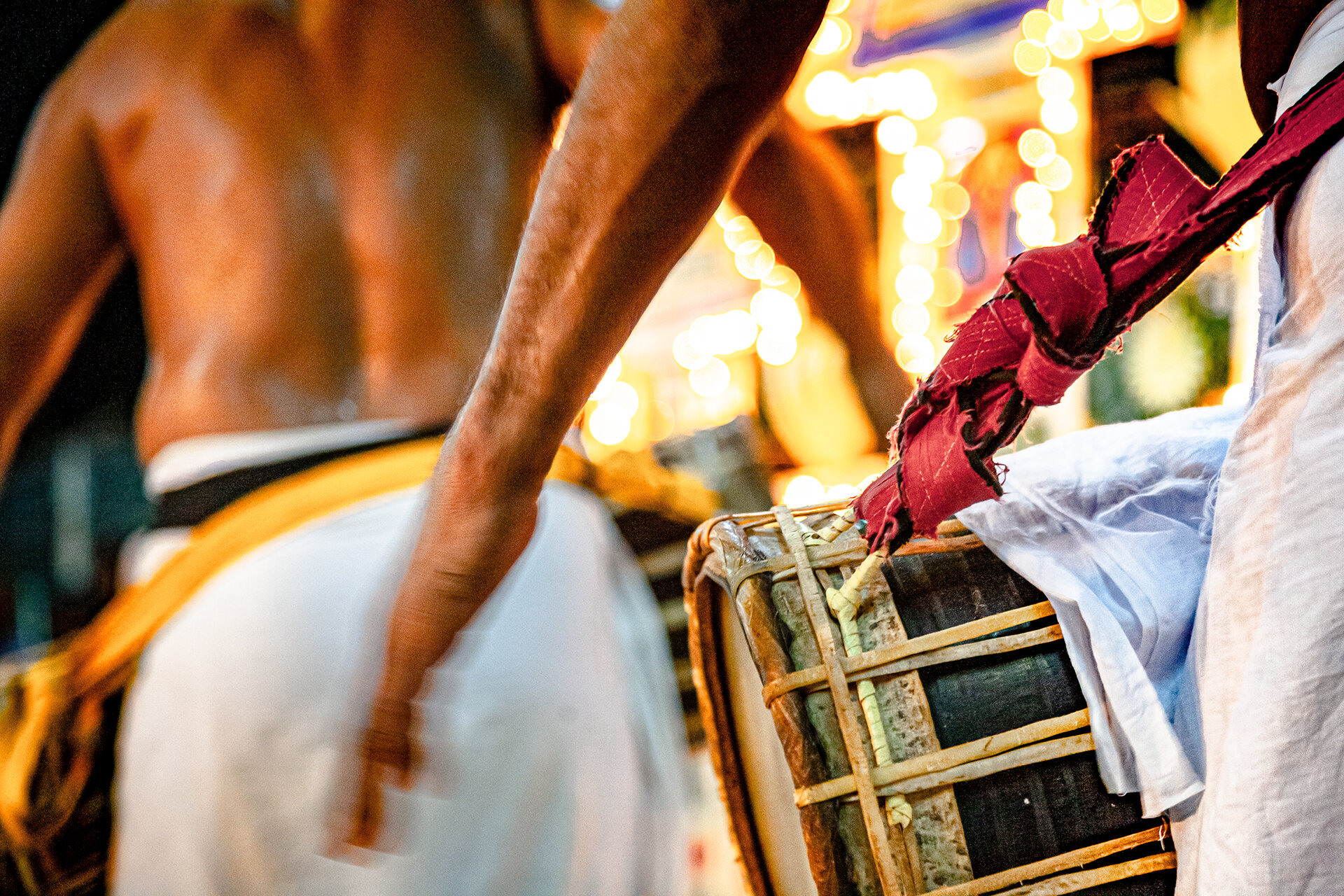
Traditional drummers at the Purana Pattini Temple drum through the night on the temple grounds during a festival.
Learn about the traditional drums of Sri Lanka.
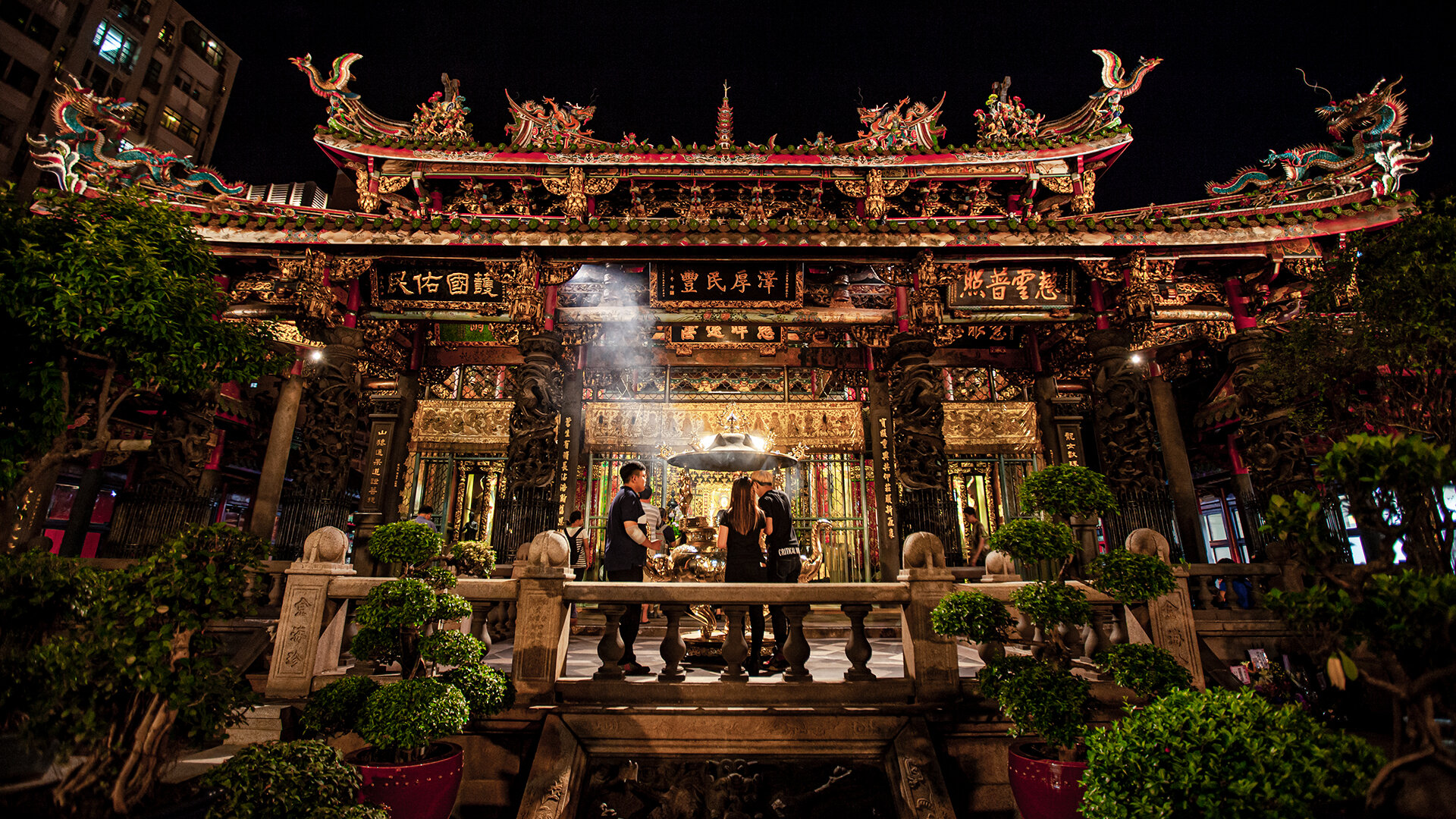
In 1738, During the Qing rule, settlers from Fujian built Lungshan Temple in Taipei to serve as a place of worship, and a gathering place for Chinese settlers. In addition to its Buddhist elements, the temple includes halls and altars dedicated to Chinese deities such as Mazu and Guan Yu.

This inviting statue is found at the entrance to a wine bar on the narrow streets of Sintra in Portugal.
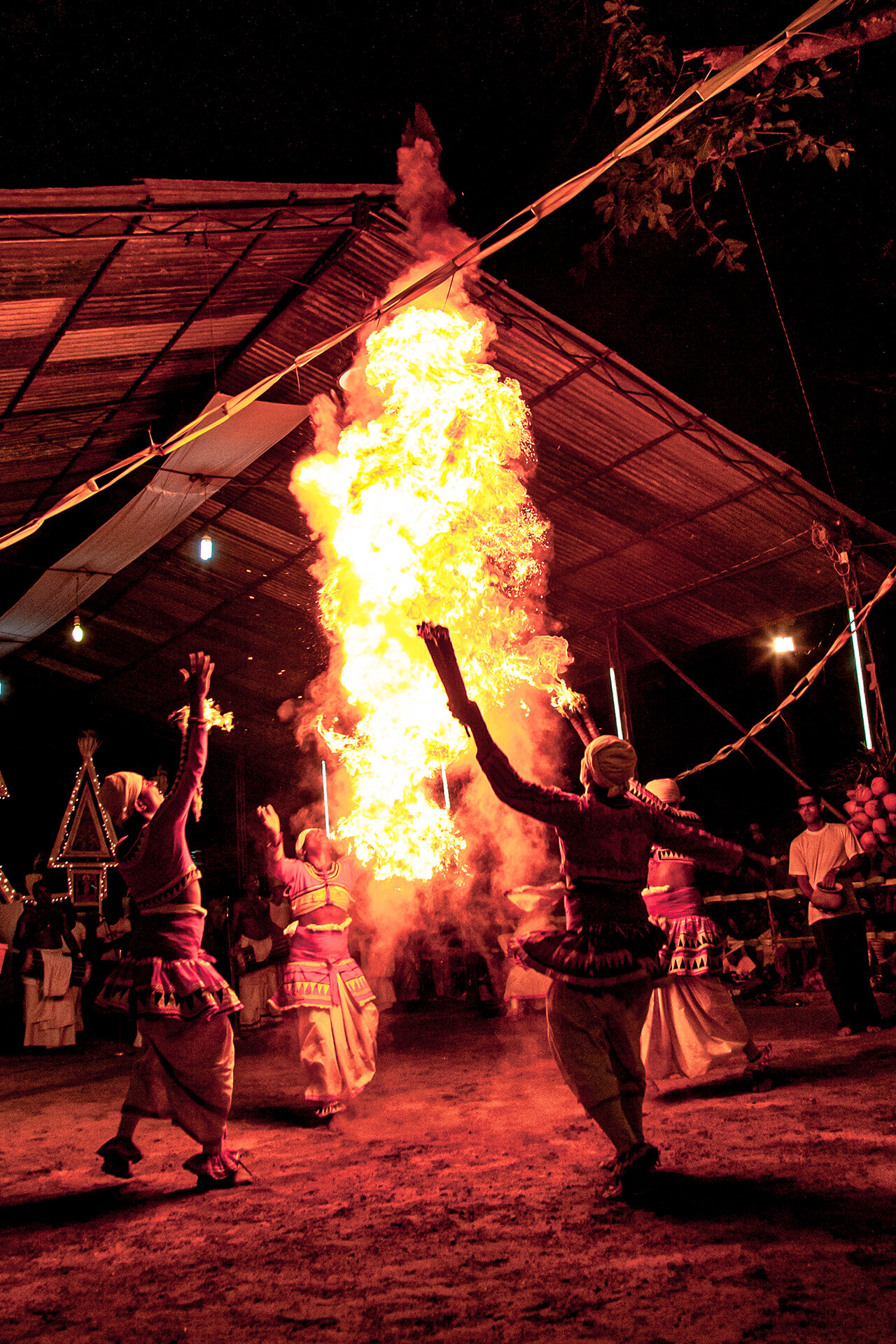
Traditional fire dancers at the Purana Pattini Temple dance through the night on the temple grounds during a festival.

Night markets in Taiwan are street food markets that operate from sunset to sunrise. To the Taiwanese, night markets are an integral part of their culture.
See this street on Google Street View.

This tiny dog runs up to people in the audience with his little pail and collects coins for this street musician outside the Igreja de Santo António dos Congregados - a beautiful church built in 1703.
See this location on Google Maps.



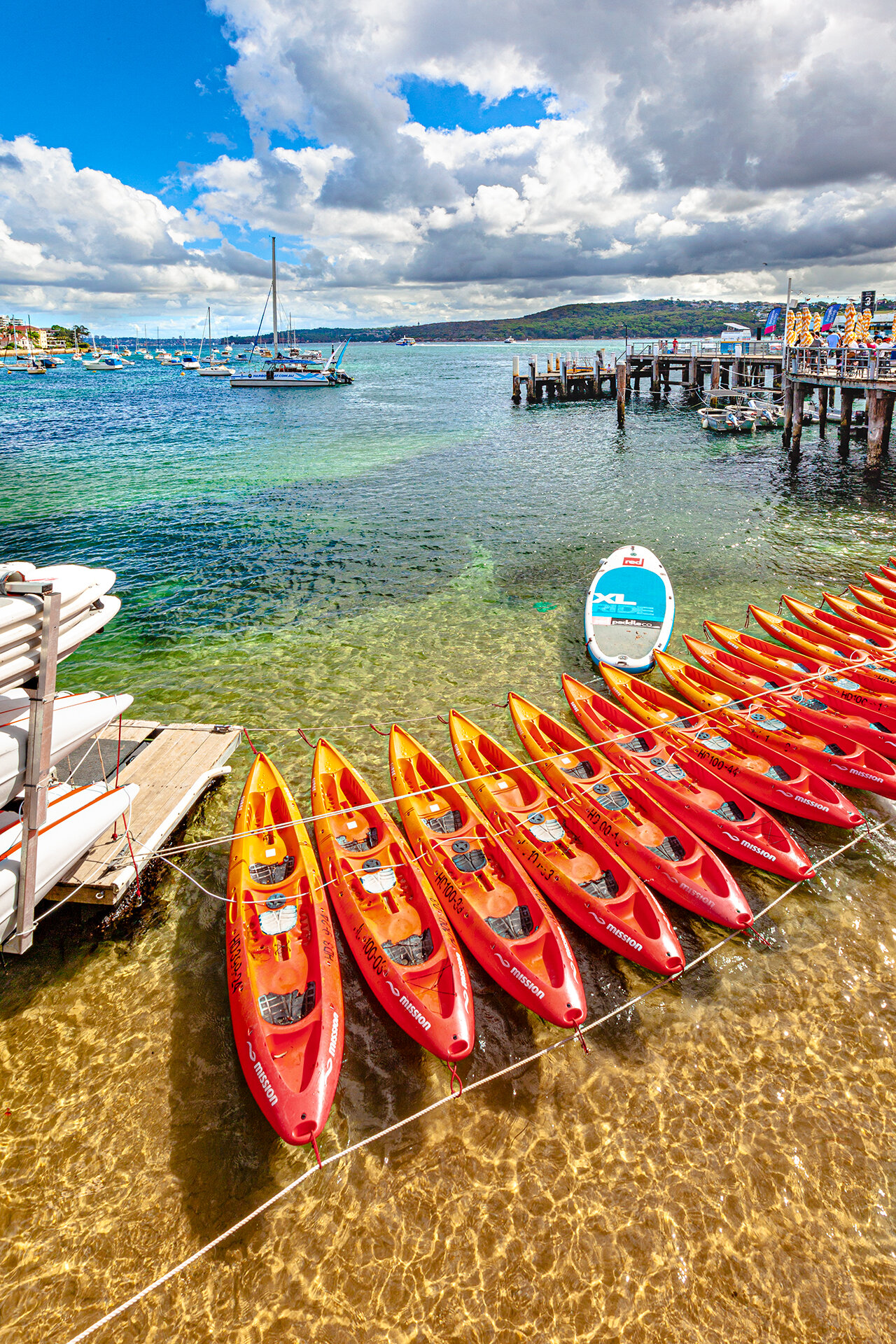














Comprising over 1000 square kilometers of land at an elevation of 236m and a population of only 50 people (2016 census), the small village of Silverton is situated in the far west of New South Wales, and about 26km north-west of Broken Hill. Silverton receives more than 120,000 visitors every year.
Mad Max II, Adventures of Priscilla - Queen of the Desert, and Mission Impossible II are few examples from an impressive list of movies filmed in Silverton.
See this location on Google Maps
This view of the Sydney harbor can be seen from the Sydney Opera House.
See this scene on Google Street View.
Between Peterborough and Broken Hill, right beside the live highspeed railway line, there is an Australian National (AN) signboard saying Dead Man’s Hill. The story goes: In the early 1900s in the middle of summer, a fettler died while working on the track at Dead Man's Hill. As the deceased had no relatives, railway workers gave him a Christian burial on the hill.
Near this signboard, there is a white wooden cross marking the grave. In recent years, a retired train driver from Pt. Pirie along with his mates from the railway has been visiting the site and has restored the cross.
See this signboard on Google Street View.
See this location on Google Street View.
A ‘lean-to’ is a type of simple structure that was added to an existing building with the rafters ‘leaning’ against another wall. Corrugated iron was a popular material used to construct the roofs and walls of such structures owing to how light, affordable, durable and easy to install it is.
In 1881, a fully functioning water-borne sewerage system was installed in Adelaide, making it the first city in Australia to have one. Indoor plumbing in the 1900s allowed for the expansion of in-building toilets, making corrugated iron lean-tos more and more prevalent on the backs and tops of existing buildings.
Though only a few building-top lean-tos remain now, this large one still existing behind the old Victoria Hotel (now Woolshed) on Hindley Street.
See the Woolshed site on Google Maps
Sitting between the basilica on the right and the central station on the left, and painted in white is Loetje Centraal - a 40-year-old steakhouse that is the home of the fabulous Loetje Biefstuk Ossenhaas & signature gravy.
Visit the Loetje Centraal website.
See the steakhouse on Google Maps.
Seen from the viewpoint near the North Head sanctuary, this is rain at dusk over Sydney’s central business district.
See this scene on Google Street View.
The view of Porto seen from across the Duoro river from Vila Nova de Gaia.
See this scene on Google Street View.
This road and buildings in Taipei are preserved by the government as a historical and cultural district.
In the late 1800s, during the late Qing Dynasty, Bopiliao was one of the busiest and most prosperous commercial areas in Taipei. It was home to various merchants and was one of the major areas for the coal trade.
See this scene on Google Street View.
Waverly is a beautiful coastal cliff-top cemetery at Bronte in the eastern suburbs of Sydney. This heritage-listed cemetery was opened in 1877.
See this scene on Google Street View.
The 18th-century Jal Mahal (Water Palace) was built in the Rajput style architecture in the middle of the Man Sagar Lake in Jaipur city.
This Buddhist nun had been meditating for many hours at the base of the Ruwanweliseya stupa when I took this picture. The shade of a singular stone pillar was her only protection from the scorching sun.
Traditional drummers at the Purana Pattini Temple drum through the night on the temple grounds during a festival.
Learn about the traditional drums of Sri Lanka.
In 1738, During the Qing rule, settlers from Fujian built Lungshan Temple in Taipei to serve as a place of worship, and a gathering place for Chinese settlers. In addition to its Buddhist elements, the temple includes halls and altars dedicated to Chinese deities such as Mazu and Guan Yu.
This inviting statue is found at the entrance to a wine bar on the narrow streets of Sintra in Portugal.
Traditional fire dancers at the Purana Pattini Temple dance through the night on the temple grounds during a festival.
Night markets in Taiwan are street food markets that operate from sunset to sunrise. To the Taiwanese, night markets are an integral part of their culture.
See this street on Google Street View.
This tiny dog runs up to people in the audience with his little pail and collects coins for this street musician outside the Igreja de Santo António dos Congregados - a beautiful church built in 1703.
See this location on Google Maps.